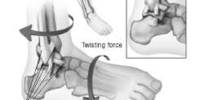According to a recent study, cutting down on daily inactive time can reduce risk factors for lifestyle illnesses within three months. It is possible to avoid these diseases by increasing light physical exercise and decreasing daily sitting time by just one hour.
The most prevalent chronic diseases worldwide are type 2 diabetes and cardiovascular conditions. Particularly overweight, which is brought on by physical inactivity and bad eating habits, as well as the metabolic problems that are frequently linked to it, raises the chance of acquiring chronic diseases.
A disorder in the body’s ability to control and utilize sugar (glucose) as fuel is type 2 diabetes. This chronic (long-term) disorder causes the bloodstream to circulate with an excessive amount of sugar. Over time, cardiovascular, neurological, and immune system issues might result from excessive blood sugar levels.
The term “cardiovascular diseases” (CVDs) refers to a variety of heart and blood vessel conditions. The biggest cause of death worldwide is CVDs. By addressing behavioral risk factors like tobacco use, unhealthy eating and obesity, inactivity, and problematic alcohol consumption, the majority of cardiovascular illnesses can be avoided.
It is commonly recognized that regular exercise helps with weight management and disease prevention. The majority of individuals’ days are often spent sitting down, and the weekly recommendation for moderate-intensity exercise is 2.5 hours.
Although type 1 and type 2 diabetes can start in childhood and adulthood, respectively, type 2 diabetes used to be classified as adult-onset diabetes. Although type 2 is more prevalent in elderly adults, type 2 instances have increased in younger people as a result of the rise in childhood obesity.
It is an encouraging thought that health benefits can be achieved by reducing the time spent sitting and increasing the amount of even light-intensity physical activity. For many, this may be an easier starting point than increasing actual exercise.
Taru Garthwaite
There are other additional underlying factors that contribute to CVDs. These are a reflection of the three main factors influencing social, economic, and cultural change: urbanization, population aging, and globalization. Poverty, stress and inherited factors are other CVD risk factors. Early detection of cardiovascular disease is crucial in order to start treatment with counseling and medication.
The Turku PET Centre and the UKK Institute in Finland conducted an intervention study to see whether lowering daily sedentary time over the course of a three-month intervention period can have a positive impact on health. Working-age people who were sedentary and physically inactive and at an elevated risk of cardiovascular disease and type 2 diabetes made up the research participants.
The intervention group was instructed to increase standing and low-intensity physical activity so order to reduce their sitting time by one hour per day, whereas the control group was told to continue with their regular routines and sedentary lifestyle.
“What makes our research design unique is that sedentary time and physical activity of both groups were measured with accelerometers throughout the entire three-month period, whereas in earlier studies activity has typically been measured only for a few days at the beginning and end of the study period. This makes it possible to receive more information on the actual behavior changes over a longer time period,” says Doctoral Candidate Taru Garthwaite from the University of Turku in Finland.
The majority of the reason the intervention group was able to reduce inactive time by 50 minutes per day on average was because they engaged in more light to moderate physical exercise. The intervention group showed improvements over the course of the three months in health outcomes related to blood sugar management, insulin sensitivity, and liver health.
“It is an encouraging thought that health benefits can be achieved by reducing the time spent sitting and increasing the amount of even light-intensity physical activity. For many, this may be an easier starting point than increasing actual exercise,” says Garthwaite.
Particularly beneficial for physically inactive individuals
Most likely, those who do not fulfill the weekly physical activity recommendations will gain the most from substituting light physical exercise for inactive time. However, if a person has multiple risk factors for diabetes and cardiovascular disease, reducing sedentary time is probably not sufficient to avoid diseases on its own.
“Reducing the time spent sitting might still slow down the development of these diseases, but greater benefits can of course be gained by increasing the amount or intensity of physical activity in addition to sitting less,” encourages Garthwaite.
The researchers will now conduct a six-month study to examine how variations in daily exercise and sedentary time affect energy metabolism, body composition, and risk factors for diabetes and cardiovascular disease.
















